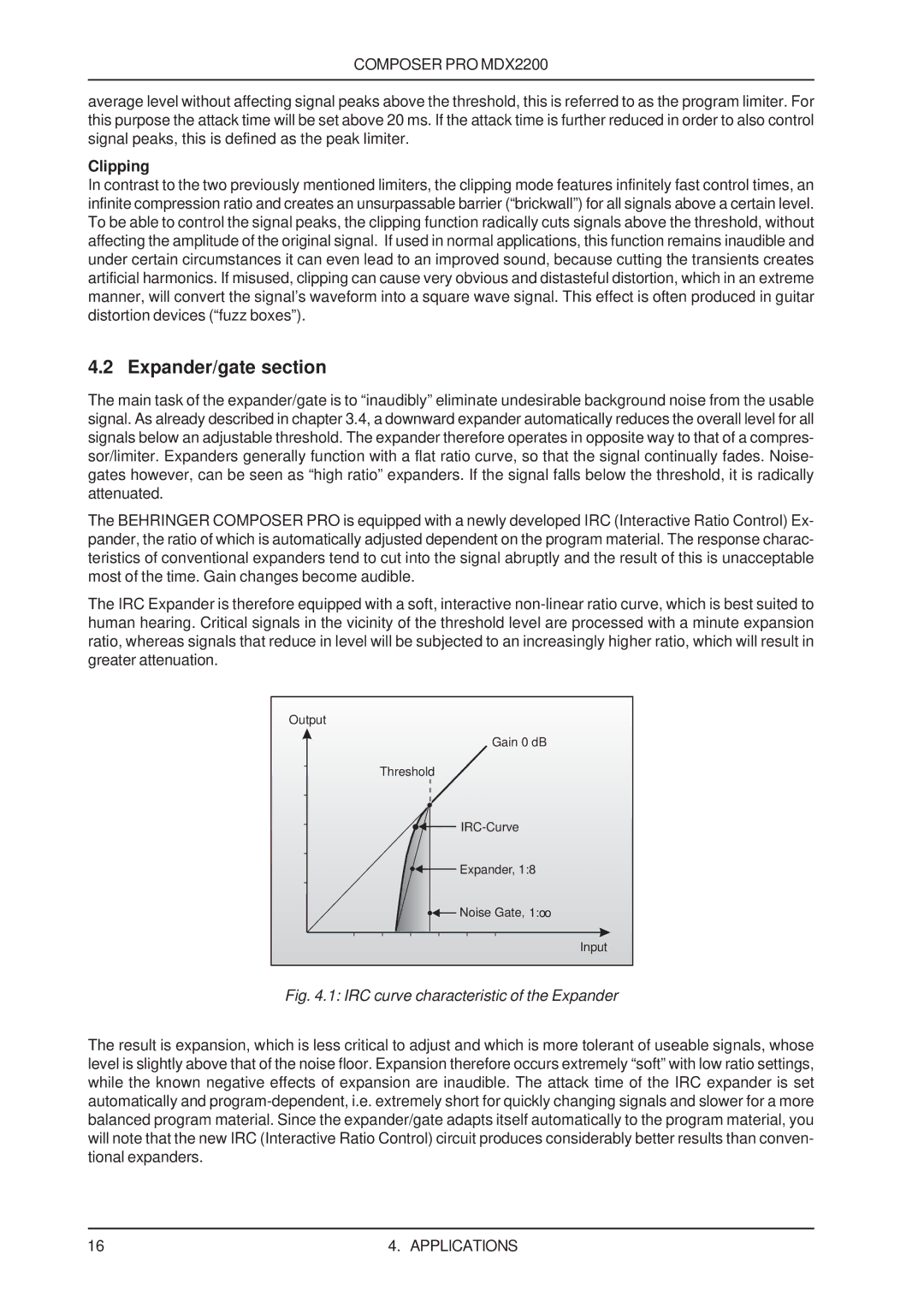
COMPOSER PRO MDX2200
average level without affecting signal peaks above the threshold, this is referred to as the program limiter. For this purpose the attack time will be set above 20 ms. If the attack time is further reduced in order to also control signal peaks, this is defined as the peak limiter.
Clipping
In contrast to the two previously mentioned limiters, the clipping mode features infinitely fast control times, an infinite compression ratio and creates an unsurpassable barrier (“brickwall”) for all signals above a certain level. To be able to control the signal peaks, the clipping function radically cuts signals above the threshold, without affecting the amplitude of the original signal. If used in normal applications, this function remains inaudible and under certain circumstances it can even lead to an improved sound, because cutting the transients creates artificial harmonics. If misused, clipping can cause very obvious and distasteful distortion, which in an extreme manner, will convert the signal’s waveform into a square wave signal. This effect is often produced in guitar distortion devices (“fuzz boxes”).
4.2 Expander/gate section
The main task of the expander/gate is to “inaudibly” eliminate undesirable background noise from the usable signal. As already described in chapter 3.4, a downward expander automatically reduces the overall level for all signals below an adjustable threshold. The expander therefore operates in opposite way to that of a compres- sor/limiter. Expanders generally function with a flat ratio curve, so that the signal continually fades. Noise- gates however, can be seen as “high ratio” expanders. If the signal falls below the threshold, it is radically attenuated.
The BEHRINGER COMPOSER PRO is equipped with a newly developed IRC (Interactive Ratio Control) Ex- pander, the ratio of which is automatically adjusted dependent on the program material. The response charac- teristics of conventional expanders tend to cut into the signal abruptly and the result of this is unacceptable most of the time. Gain changes become audible.
The IRC Expander is therefore equipped with a soft, interactive
Output |
Gain 0 dB |
Threshold |
Expander, 1:8 |
Noise Gate, 1:oo |
Input |
Fig. 4.1: IRC curve characteristic of the Expander
The result is expansion, which is less critical to adjust and which is more tolerant of useable signals, whose level is slightly above that of the noise floor. Expansion therefore occurs extremely “soft” with low ratio settings, while the known negative effects of expansion are inaudible. The attack time of the IRC expander is set automatically and
16 | 4. APPLICATIONS |
